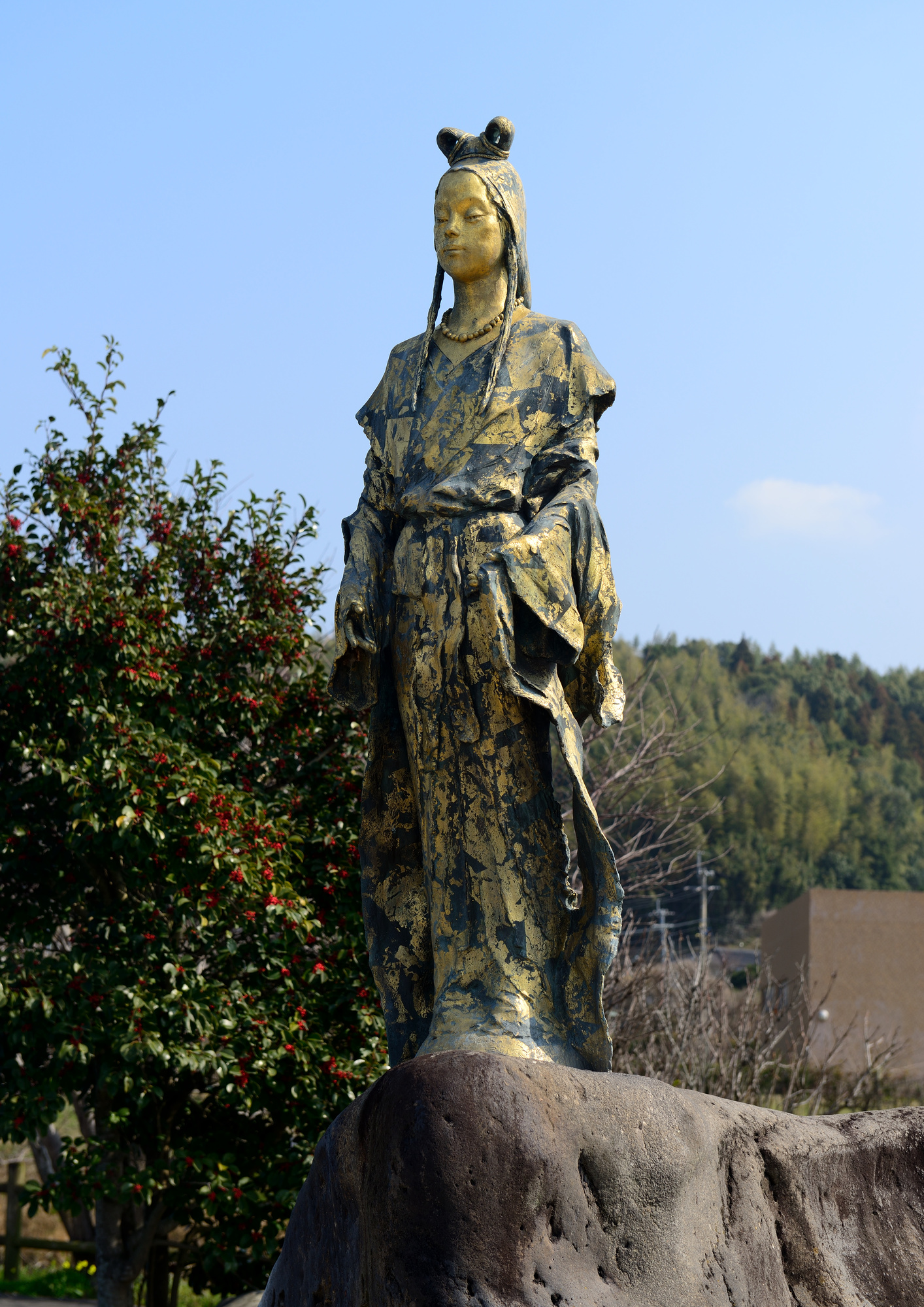The significance of the marriage of the deity that descended from the heavens
Exploring the Kojiki
Updated on Dec 25 2018
Japan’s oldest book, the Kojiki. It dramatically illustrates the history of Japan from the beginning of the world, the appearance of the deities, to the Imperial succession. Behind each impressive episode, there exist numerous “mysteries” that are yet to be solved even today. By exploring each, we will think about the origin of Japanese beliefs and culture.

Statue of Konohana-no-sakuyabime,
in Minamisatsuma City, Kagoshima Prefecture
Prosperity promised by marriage, and the loss of eternal life
Upon descending from the heavens to rule over the earthly realm, Ninigi-no-Mikoto, who was the grandson of Amaterasu, met a beautiful maiden named Konohana-no-sakuyabime. When Ninigi-no-Mikoto proposed to her, her father, the deity of the mountains, was so happy that he tried to make Ninigi-no-Mikoto marry the maiden’s elder sister, Iwanagahime, as well. However, the sister was very ugly, so Ninigi-no-Mikoto resisted and married only Konohana-no-sakuyabime.
Truth be told, according to the father deity, if Ninigi-no-Mikoto had married Iwanagahime, the descendants of the heavenly deities were to be promised an eternal and permanent existence, much like a rock. However, as Ninigi-no-Mikoto only married Konohana-no-sakuyabime, the descendants of the heavenly deities were promised prosperity, but that their lives would be short, much like the flowers that bloom on trees. True to the father deity’s words, it is said that the Imperial Family of Japan, the descendants of the heavenly deities, would be prosperous but that they would have a defined lifespan. This is a myth set between the transition of the era of deities and the era of the Imperial Family.
Myths from elsewhere in the world explaining the origin
of the human lifespan
This myth is said to belong to the “banana type” of myths, as mainly told in Southeast Asia, in which the origin of death is explained. The story relays that when the first humans were given a rock and a banana from a deity, and when pressed to choose one, they rejected the rock because it was inedible and instead chose the banana. Humans were thus unable to obtain eternal existence (as embodied in a rock) and were instead given a short lifespan (much like a banana).
In the case of the Kojiki, this is not relayed using the form of a banana, but flowers on a tree . The name Konohana-no-sakuyabime means “princess of the flowering tree”. A tree’s flowers can be said to represent a more-fragile state, and the image of flowers blooming beautifully is an apt way to represent the prosperity of the Imperial Family.
What the marriage of Ninigi-no-Mikoto signifies
The marriage between Ninigi-no-Mikoto and Konohana-no-sakuyabime had the significance of bringing mystical powers into the bloodline of the descendants of the heavenly deities. One child born between the two deities in turn married the daughter of the sea deity, incorporating into the bloodline this deity’s mystical power. The first emperor of Japan thus carries the lineage of the heaven, mountain, and sea deities.
-Kokugakuin University has been selected “as a place for the promotion of the study of the Kojiki” by the private university branding project of the Ministry of Education in 2016.-

published in The Japan News on 11/12/2018
Masahiro TANIGUCHI
Research
Japanese literature of ancient times (Kojiki, Nihon-shoki, topography)
Papers
“The Old Man Says” in izumono-kuni-fudoki(2017/05/10)
Tatenui County and Mount Kannabi in Izumonokuni-fudo-ki : Reading What the Genius Says(Reading)(2009//)

